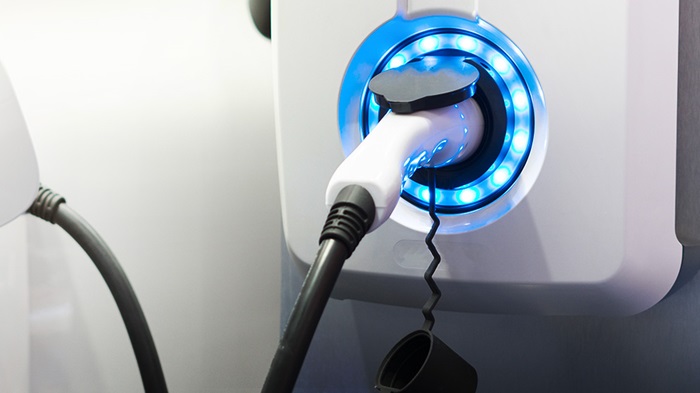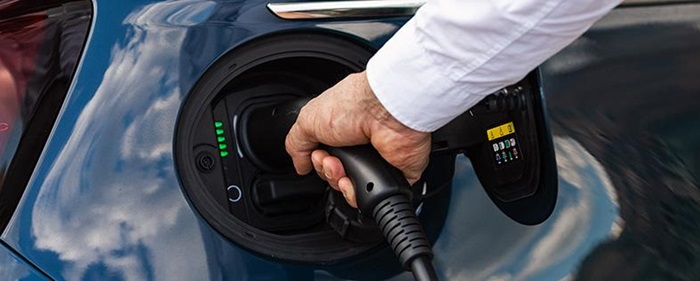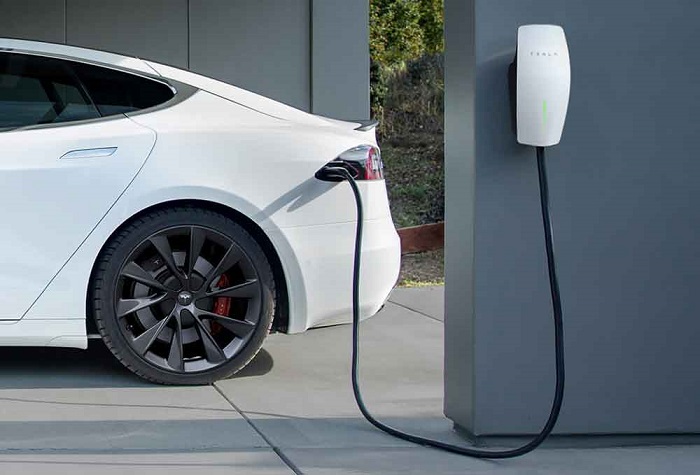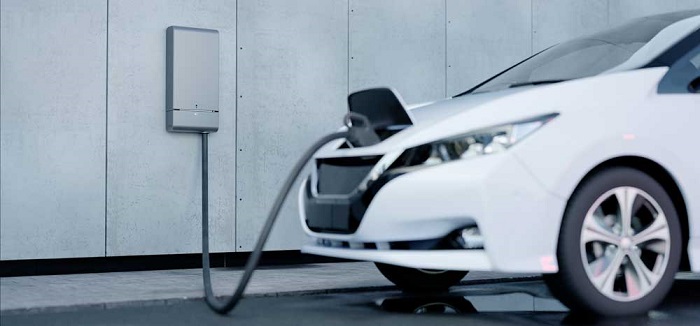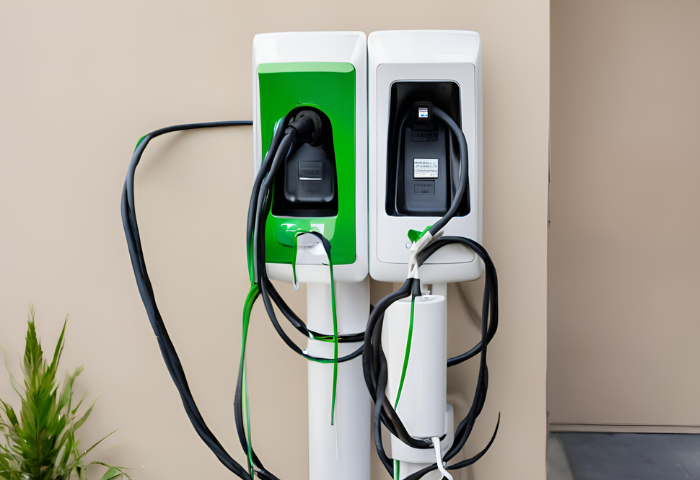Exploring the Basics: Level 1 EV Chargers
Electric vehicles (EVs) are growing in popularity, offering a clean and efficient alternative to traditional gasoline-powered cars. But unlike filling up a gas tank, keeping your EV juiced up requires a different approach: EV charging.
As the globe moves toward sustainable transportation, electric vehicle (EV) charging technology is important to promoting widespread adoption. Understanding the various stages of EV charging is critical for comprehending the changing environment of electric transportation. In this article, we will look at the fundamentals of EV charging technology and highlight the key features and benefits of Level 3 charging.
1. Understanding EV Charging Levels
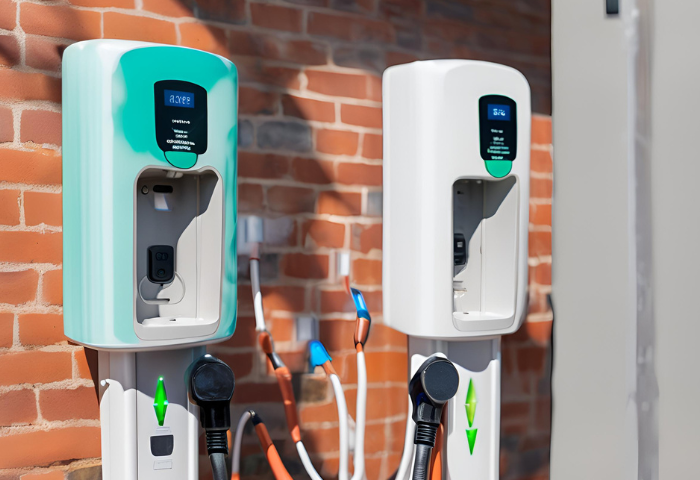
Understanding the different levels of electric vehicle (EV) charging is crucial for both current and prospective EV owners. It can significantly affect their user experience, efficiency, and overall satisfaction with their vehicle. Here’s a comparison of Level 1 and Level 2 EV chargers, including their differences, advantages, limitations, and technical specifications.
1.1 Key Differences Between Level 1 and Level 2 EV Chargers
Charging Speed and Power Delivery
Level 1 chargers typically use a conventional household outlet (120V) and have a charging rate of 4-5 miles per hour. This sluggish pace is appropriate for overnight charging or for EVs used for short daily travels.
Level 2 chargers require a more powerful power source (240 volts), similar to that used in major domestic appliances such as dryers. They can increase range by 20-25 miles per hour, making them more faster and more appropriate for a wider range of applications, including longer journeys.
User Scenario
Level 1 Chargers are appropriate for consumers who have long-term parking needs at home, such as overnight parking. This charger is ideal for those who have a regular daily schedule and just need a little amount of driving power.
Level 2 chargers are intended for customers with a variety of driving behaviors, such as longer commutes and frequent trips. They are also more common at public charging stations due to their faster charging capabilities.
1.2 Benefits and Limitations of Level 1 and Level 2 Chargers
Benefits:
- Level 1 Chargers are highly accessible and do not require any additional installation costs, making them cost-effective for new EV owners.
- Level 2 Chargers provide much quicker charging, making them practical for users with higher daily mileage needs or less consistent schedules.
Limitations:
- Level 1 Chargers can be impractical for users with higher mileage needs due to their slow charging rate.
- Level 2 Chargers often require professional installation and possible upgrades to home electrical systems, increasing initial costs.
1.3 Technical Specifications of Level 1 Chargers
- Voltage and Amperage: Operates on a standard 120V outlet with a current generally up to 15-20 amperes.
- Electrical Requirements: Does not typically require modifications to household electrical systems.
- Safety Features: Often include features like ground fault circuit interrupter (GFCI) protection to prevent electrical risks.
1.4 Types of EV Charging Connectors: What is Level 1 Charging?
Connectors Used in Level 1 Charging
Level 1 charging commonly uses a J1772 connector in North America, which is universally compatible with all modern EVs (except for Teslas, which require an adapter). This connector features a five-pin design that supports the slow transfer of AC power.
Comparison with Level 2 and Level 3 Connectors
- Level 2 Chargers also primarily use the J1772 connector in North America, benefiting from the same universality but delivering higher voltages and currents.
- DC Fast Chargers (Level 3) use different connectors depending on the system and region, such as the CHAdeMO, CCS (Combined Charging System), or Tesla’s proprietary Supercharger connector. These are designed to handle significantly higher power levels for rapid charging.
2. Detailed Look at Level 1 EV Chargers
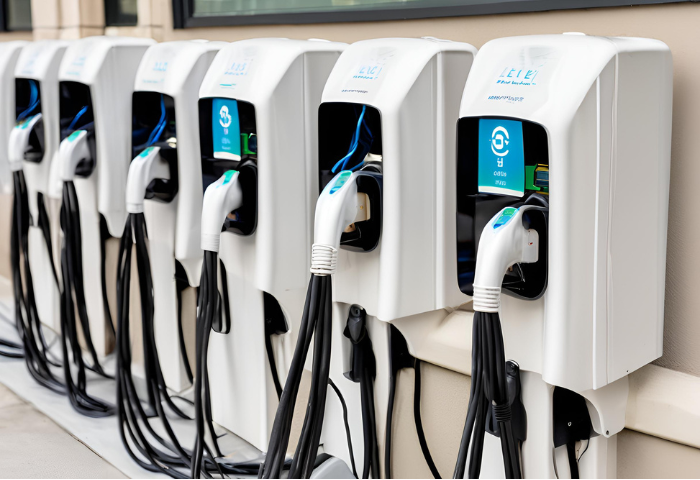
2.1 Product Overview
Level 1 chargers are typically the most accessible type of EV charger due to their use of standard 120V household outlets. Here’s what you should consider when reviewing various Level 1 charger models:
- Specifications: Most Level 1 chargers deliver power at 120 volts with a current of 12 to 16 amperes. This results in a charging rate of about 4–5 miles per hour.
- User Feedback: Reviews often highlight the convenience of using existing outlets without the need for additional installation. Users appreciate the minimal investment needed but note the limitation in charging speed, which is best suited for overnight use or for EVs with smaller daily mileage needs.
Several popular Level 1 chargers are available from manufacturers like ClipperCreek, Bosch, and ChargePoint, offering reliable performance and user-friendly features.
2.2 Installation Requirements and DIY Tips
Installing a Level 1 charger is typically straightforward due to its compatibility with standard outlets. Here are some tips and common issues:
Installation Guide:
- Electrical Requirements: Ensure that the outlet is on a dedicated circuit to prevent overloading. Check that the outlet is grounded and in good condition.
- Placement: Install the charging station near where the vehicle will be parked, ensuring the cable easily reaches the vehicle’s charging port.
Common Issues and Troubleshooting:
- Circuit Overload: If other appliances share the circuit, the breaker may trip. Ensure the charger is on a dedicated circuit.
- Faulty Outlets: Older outlets may not perform reliably. If the charger frequently disconnects or fails to start, consider replacing the outlet.
- GFCI Tripping: Regular testing and possibly replacing the GFCI outlet can mitigate nuisance tripping, which is a common issue in outdoor installations.
2.3 Cost Analysis
Comparing the costs associated with Level 1 chargers against Level 2 and Level 3 chargers involves several factors:
Purchase Costs: Level 1 chargers are typically the least expensive, ranging from $100 to $300. In contrast, Level 2 chargers can cost from $500 to over $700, and DC fast chargers are significantly more expensive and rarely considered for residential use due to their high power requirements.
Installation Costs: Level 1 chargers usually require no additional installation costs if a suitable 120V outlet is already available. Level 2 installations can vary significantly based on electrical upgrades needed and labor costs, often ranging from $200 to $1,000.
Operational Costs: The cost of electricity will depend on your local rates but charging at home with a Level 1 charger is generally considered economical. The slower charging rate means the EV spends more time drawing a smaller amount of power compared to the rapid draw of higher-level chargers.
3. Practical Usage of Level 1 Chargers
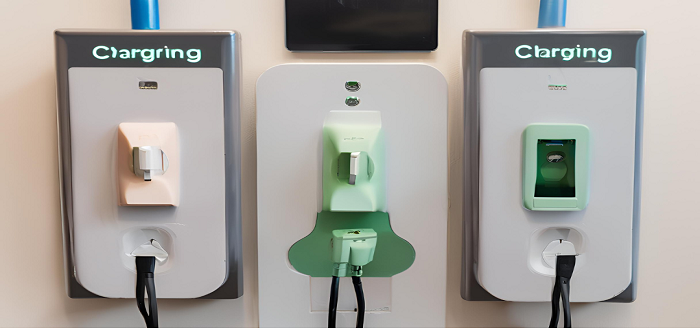
3.1 When to Consider Level 1 Charging
Home Charging: Level 1 chargers are ideal for home charging, particularly for EV owners who have a dedicated parking place with an outlet nearby. They are great for overnight charging since the slow charging rate allows the vehicle to be completely charged by morning.
Emergency Charging: When a Level 2 charging station is unavailable or inaccessible, Level 1 chargers can provide a consistent stream of electricity to replenish the EV’s battery, allowing the driver to reach their destination or the nearest charging station.
Backup Charging: Level 1 chargers can serve as a backup charging option for EV owners who primarily rely on Level 2 charging stations but occasionally encounter situations where access to faster charging infrastructure is limited.
3.2 Advantages of Using Level 1 Charging
Accessibility: Level 1 chargers can be plugged into any standard household outlet, making them widely accessible and convenient for EV owners, especially those without access to dedicated charging stations.
Cost-effectiveness: Level 1 chargers are typically more affordable than Level 2 or Level 3 chargers, both in terms of upfront costs and installation expenses. They also do not require any additional equipment beyond the charger itself.
Low Power Consumption: Level 1 chargers draw relatively low power from the electrical grid compared to higher-level chargers, which can be beneficial in regions where electricity generation is primarily from renewable sources.
3.3 Environmental Impact and Benefits
Renewable Energy Integration: Level 1 chargers can be powered by renewable energy sources such as solar panels or wind turbines installed at home. This integration reduces the carbon footprint associated with EV charging, contributing to environmental sustainability.
Grid Flexibility: The slow charging rate of Level 1 chargers can help alleviate strain on the electrical grid by spreading out the demand for electricity over longer periods, especially during peak hours.
3.4 User Experiences and Case Studies
Residential Charging: Many EV owners rely on Level 1 chargers for their daily charging needs at home. They appreciate the convenience of simply plugging in their vehicle overnight and waking up to a fully charged battery.
Remote Areas: In remote areas where access to charging infrastructure is limited, EV owners rely on Level 1 chargers as a primary source of charging. Despite the slower charging speed, they find it sufficient for their needs.
Challenges: Some users may face challenges with the slow charging speed of Level 1 chargers, especially when they require quick recharges during long journeys. Nevertheless, by scheduling charging stops ahead of time and taking advantage of alternative charging options when available, these difficulties can frequently be lessened.
Solutions: EV owners often find creative solutions to overcome the limitations of Level 1 charging, such as installing dedicated outlets or portable charging stations in convenient locations for faster charging when needed.
4. Comparing All Charging Levels

4.1 Summary of Levels 1, 2, and 3 of Charging
| Level of Charging | Science and Technology | Quickness | Infrastructure Needs |
|---|---|---|---|
| Level One | makes use of a 120-volt household outlet as standard. | offers a range of two to five miles per hour on average. | access to a regular electrical outlet is necessary. |
| Level 2 | Utilizes a 240-volt electrical supply. | Typically, it provides 10–60 miles of range per hour. | Requires the installation of a dedicated Level 2 charging station, which may necessitate electrical upgrades. |
| Level 3 (DC Fast Charging) | Employs direct current (DC) and high-powered charging stations. | Provides rapid charging, delivering up to 200 miles of range in as little as 20-30 minutes. | Requires specialized DC fast charging stations with high-voltage connections, often found along highways and in commercial areas. |
4.2 In-depth Comparison
Technology:
Level 1 and Level 2 chargers typically use alternating current (AC) charging, whereas Level 3 chargers use direct current (DC) to charge faster. Level 3 chargers use advanced technology to manage high power levels and interact with EVs.
Speed:
Level 3 chargers offer the fastest charging speeds, making them suitable for long-distance travel and quick top-ups. Level 2 chargers provide moderate charging speeds, suitable for overnight or workplace charging. Level 1 chargers have the slowest charging speeds but are convenient for home charging and emergency situations.
Infrastructure Requirements:
Level 1 chargers are the most accessible, requiring only a standard electrical outlet. Level 2 chargers require installation of dedicated charging stations, which may involve electrical upgrades. Level 3 chargers necessitate specialized high-power charging stations, often located in specific locations like highways or commercial areas.
4.3 Expert Opinions and Recommendations
Industry experts emphasize that the choice of charging level depends on various factors such as driving habits, vehicle range, and infrastructure availability.
Practicality of Level 1 Charging: Experts acknowledge that Level 1 charging is practical for residential charging and as a backup option. While it may not suit all needs, it provides a convenient and cost-effective solution for many EV owners, especially those with shorter daily commutes.
Future of Level 1 Charging: Experts believe that Level 1 charging will continue to play a significant role in EV adoption, particularly as more consumers embrace electric vehicles for daily commuting. However, they emphasize the importance of expanding Level 2 and Level 3 charging infrastructure to support long-distance travel and alleviate range anxiety.
5. Tailored Recommendations
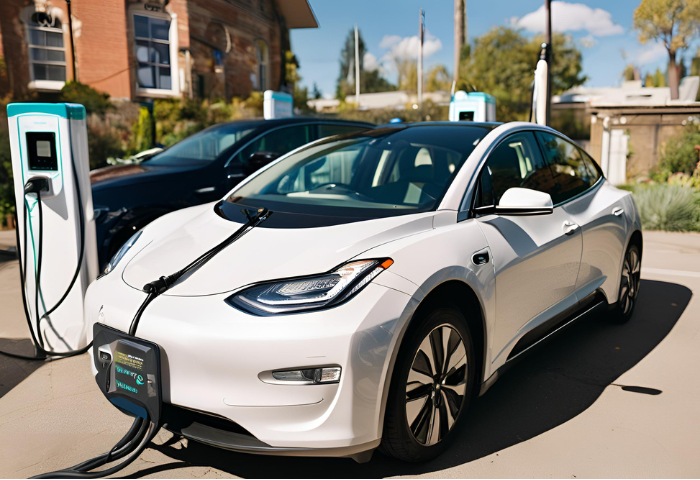
For daily commuting (short-range EVs):
Recommendation: Level 1 charging may suffice for EV owners with short daily commutes, especially if they have access to overnight charging at home.
Action: Utilize Level 1 charging for overnight charging at home. Ensure the vehicle is plugged in regularly to maintain a sufficient charge for daily commuting needs.
For Daily Commuting (Long Range EVs):
Recommendation: While Level 1 charging can still be used for daily commuting, owners of long-range EVs may benefit from faster charging options to ensure quicker turnaround times.
Action: Consider installing a Level 2 charger at home or utilizing public Level 2 charging stations for faster charging during the day. This can provide more flexibility and convenience for charging.
For Longer Trips:
Recommendation: Level 2 or Level 3 charging is recommended for longer trips or frequent travel due to their faster charging speeds.
Action: Plan routes that include stops at Level 2 or Level 3 charging stations to minimize charging time during longer journeys. Utilize Level 3 charging stations along highways for rapid charging when needed.
Considering Vehicle Range:
Recommendation for Short Range EVs: Owners of EVs with shorter ranges may find Level 1 charging sufficient for their daily commuting needs.
Action for Short-Range EVs: Utilize Level 1 charging for overnight charging at home, and consider Level 2 or Level 3 charging for longer trips or additional range when necessary.
Recommendation for Long Range EVs: Owners of long-range EVs may benefit from faster charging options to minimize charging time and maximize range flexibility.
Action for Long Range EVs: Invest in Level 2 charging infrastructure at home or seek out Level 3 charging stations along routes for quicker charging options, ensuring the ability to cover longer distances without extended charging stops.
6. Policy, Incentives, and Future Predictions
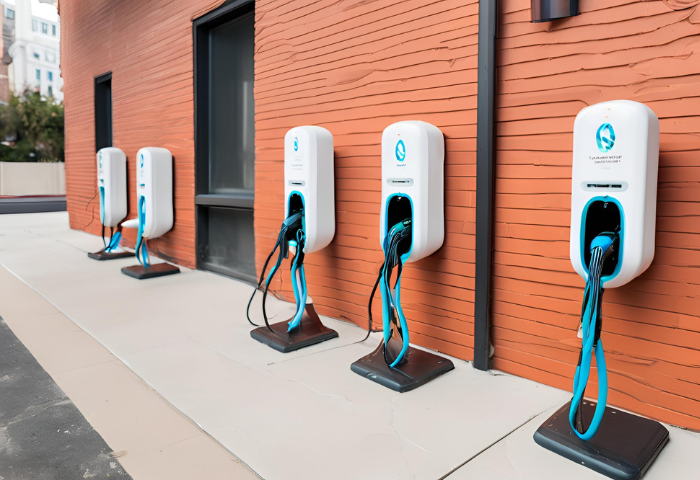
6.1 Policy and Incentives
Government Incentives: Many governments offer incentives and subsidies to encourage the installation of EV chargers, including Level 1 chargers, to support the adoption of electric vehicles. These incentives may include tax credits, grants, or rebates for individuals, businesses, or municipalities investing in charging infrastructure.
Regulatory Considerations: Regulatory policies play a crucial role in shaping the deployment and usage of EV chargers. Regulations regarding building codes, zoning laws, and permitting processes can impact the installation and accessibility of charging stations, including Level 1 chargers. Additionally, regulations related to energy tariffs and utility regulations can influence charging costs and infrastructure development.
6.2 Future of Level 1 Charging
Technological Advancements: While Level 1 charging is inherently limited by its slower charging speed, technological advancements may improve its efficiency and convenience. Advancements in battery technology, such as higher energy density and faster charging capabilities, could potentially enhance the effectiveness of Level 1 chargers over time.
Smart Charging Solutions: Integration of smart charging solutions and grid-connected features may enable more efficient use of Level 1 chargers. Smart charging technology can optimize charging schedules based on energy demand, grid capacity, and electricity rates, thereby reducing strain on the grid and minimizing charging costs for users.
Wireless Charging: Wireless charging technology could revolutionize the way EVs are charged, including Level 1 charging. While currently more prevalent in higher-level charging solutions, such as Level 2 and Level 3 chargers, advancements in wireless charging could eventually make it feasible for Level 1 chargers, providing added convenience and ease of use for EV owners.
6.3 Predictions about the Evolving Role of Level 1 Charging
Residential Charging: Level 1 charging is likely to remain a staple for residential charging, particularly for EV owners with access to overnight charging at home. Its simplicity, affordability, and ease of installation make it an attractive option for daily commuting and overnight charging needs.
Complementary Charging Solution: While Level 1 charging may not be suitable for all scenarios, it will continue to serve as a complementary charging solution alongside higher-level chargers, such as Level 2 and Level 3 chargers. EV owners may utilize Level 1 charging for routine overnight charging while relying on faster charging options for longer trips and rapid top-ups.
Integration with Renewable Energy: As the shift towards renewable energy sources accelerates, Level 1 charging may become increasingly integrated with home solar panels and other renewable energy systems. This integration can further reduce the environmental impact of EV charging and promote energy independence for EV owners.
Understanding and leveraging the different levels of EV chargers empowers users to make informed decisions, optimize charging efficiency, and contribute to the broader transition towards sustainable transportation. By embracing electric vehicles and investing in the appropriate charging infrastructure, users can not only enjoy the benefits of cleaner, greener mobility but also play a vital role in shaping the future of transportation.
Additional Resources
- Plug In America: Provides comprehensive resources, guides, and FAQs about electric vehicles and charging infrastructure. Website: Plug In America
- Electric Auto Association (EAA): Offers educational materials, forums, and local chapter events focused on electric vehicle adoption and charging solutions. Website: Electric Auto Association
- Department of Energy (DOE) Alternative Fuels Data Center: Offers information on federal and state incentives, charging station locator tools, and educational resources related to EV charging. Website: DOE Alternative Fuels Data Center

Henry Michael is a leading expert in EV charging station research, specializing in innovative solutions for electric vehicle infrastructure. With a passion for sustainability and technological advancement, he is dedicated to advancing the accessibility and efficiency of EV charging worldwide.

